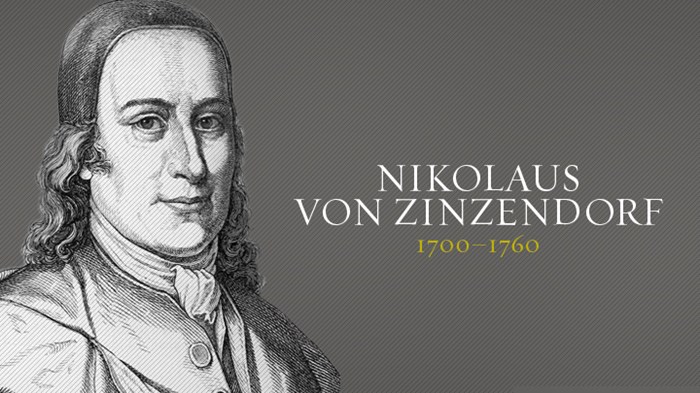Lessons from the dead guys
One of the great tragedies of our generation is we think we’re it. We think our time is unique and everyone else before us was just backward. But while every situation in history is unique, our ancestors have much to teach us about the life of faith. We’re going take the next few blogs to look at some believers (dead guys and gals) called the Moravians who are little known but who had a massive impact on the world and see what lessons and challenges their life of faith gives to us in 21st century Hong Kong.
It’s Germany, 1720s. Church attendance: high. Love of Jesus: low. Churches: divided and dry. Out of the spiritual desert, a movement called Pietism was started by a man named Jakob Spener which encouraged people to have a personal relationship with God through reading Scripture and prayer. One of Spener’s followers was a rich noble called Count Nikolaus Zinzendorf. His family had high expectations for him to become a high ranking government official, but the Count fell in love with Jesus and instead gained a vision for building a community for persecuted religious minorities. He started small groups of prayer and bought some land to house this community. But he was too busy being a career-driven count to know where to begin.
In 1722 some families fleeing persecution in an area now part of the Czech Republic (Moravia) passed by the Count’s land and heard of his vision. 1 then 10 turned up at his doorstep. And the community started. By 1726, it had grown to 300 people. They named it Herrnhut meaning ‘the Lord’s watch’. But ministry was difficult. So many passionate and traumatised people from different religious traditions and different cultural backgrounds led to mounting tensions. One angry man even marched through the community declaring Zinzendorf was the Anti-Christ. Instead of running away from conflict, the Count moved his whole family into the community and went from house to house listening to grievances and doing gospel counselling with every family using Scripture.
And God began to work powerfully. On May 12, 1727, Zinzendorf addressed the community for three hours on the need for Christian unity. A spirit of confession and repentance swept through the families. The people sorrowfully confessed their past quarrelling and promised to live in love and simplicity. They organised small groups for confession of sin and gospel encouragement.
On Wednesday August 13, 1727, the Herrnhut community participated in a communion service. During the service, the Count prayed, openly confessing his sins before the Lord. Others were likewise prompted to pray. And the Spirit of God took over, divisions were healed, “From that time on,” one member said, “Herrnhut became a living Congregation of Christ.”
Zinzendorf describes what happened:
“We needed to come to the communion with a sense of the loving nearness of the Saviour…because on this day…the Congregation of Herrnhut, assembled for communion were all dissatisfied with themselves. They had quit judging each other because they had become convinced, each one, of his lack of worth in the sight of God and each felt himself at this communion to be in the very presence of our noble Saviour….their hearts told them that He would be their patron and their priest who was at once changing their tears into oil of gladness and their misery into happiness. This firm confidence changed them in a single moment into a happy people which they are to this day and into this happiness they have since led many thousands…”
We will continue the story next time. But here are three initial lessons we learn from the Moravians:
1) Move towards the mess not away from it
Some of us run from conflict. Some of us pretend it doesn’t exist. Zinzendorf saw conflict as an opportunity to minister patiently to hurting and broken people. Our city is full of pain and yet now is the time to move towards people not away from them. In church, when relationships get messy, we tend to avoid those we dislike. But the gospel calls us to wade in not run away, to listen well and to gently, patiently and graciously bring the gospel of grace to each other. This is how Jesus’ followers operate.
2) Repentance and confession is the pathway to unity and healing.
In a time across the world where division is tearing apart nations, cities, churches and families, healing comes to communities when we regularly own the sin in our hearts and confess it to God and each other. We may think we are right in our opinions – and we may be – but if we harbour hostility or indifference towards our brothers and sisters then we are in the wrong. Honest, no-excuses-made, humble confession in community frees us to walk in the reality of the reconciliation Christ bought for us on the cross. This means it is not enough for our Community Groups to be places of Bible study or sharing problems. True discipleship allows Christ to expose the depths of our sin in the safety of a loving community which calls us to repent and find grace in Christ to obey.
3) Repentance turns upwards not inwards.
The confession and repentance of the Herrnhut community was not a self-focused, self-condemning, pity party. Instead, the awareness of Jesus’ presence with them brought deeper conviction of sin and greater joy and happiness at his gracious forgiveness of them. True repentance always leaves us with a bigger view of Jesus’ grace not a larger view of our failings. It leads us out into greater confidence in Jesus, not greater wallowing in our badness. Thanksgiving and joy are the fruit of true repentance. If that is not your experience, then you may be repenting inward, but not looking upward to your Saviour.

